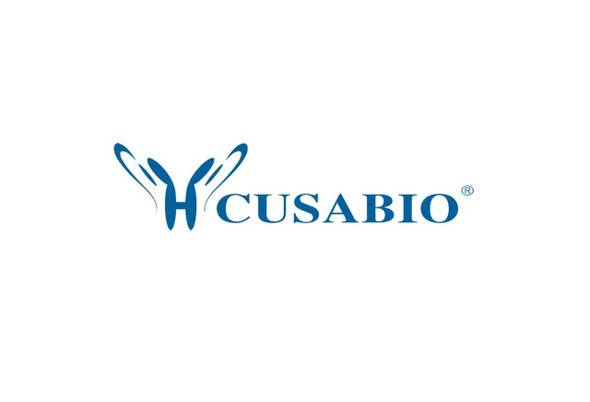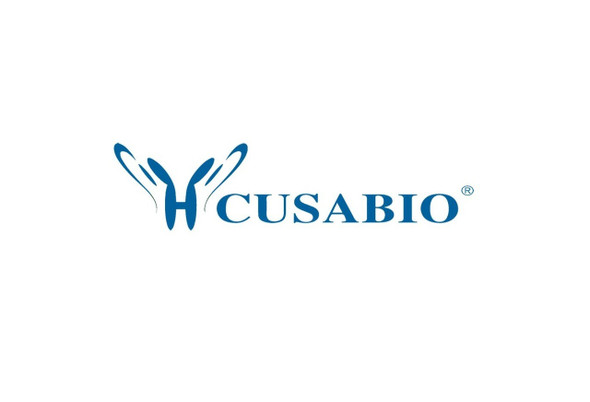Cusabio Mouse Recombinants
Recombinant Mouse Nogo-B receptor (Nus1), partial | CSB-YP860384MO
- SKU:
- CSB-YP860384MO
- Availability:
- 25 - 35 Working Days
Description
Recombinant Mouse Nogo-B receptor (Nus1), partial | CSB-YP860384MO | Cusabio
Alternative Name(s): Di-trans,poly-cis-decaprenylcistransferaseCurated Nogo-B receptorBy similarity Short name: NgBRBy similarity Nuclear undecaprenyl pyrophosphate synthase 1 homolog
Gene Names: Nus1
Research Areas: Others
Organism: Mus musculus (Mouse)
AA Sequence: SWLRVRFGTWNWIWRRCCRAASAAVLAPLGFTLRKPRAVGRNRRHHRHPHGGPGPGPGPAATHPRLRWRADVRSLQKLPVHMGLLVTEEVQEPSFSD
Source: Yeast
Tag Info: N-terminal 6xHis-tagged
Expression Region: 24-120aa
Sequence Info: Cytoplasmic Domain
MW: 13 kDa
Purity: Greater than 90% as determined by SDS-PAGE.
Relevance: With DHDDS, forms the dehydrodolichyl diphosphate synthase (DDS) complex, an essential component of the dolichol monophosphate (Dol-P) biosynthetic machinery. Adds multiple copies of isopentenyl pyrophosphate (IPP) to farnesyl pyrophosphate (FPP) to produce dehydrodolichyl diphosphate (Dedol-PP), a precusrosor of dolichol which is utilized as a sugar carrier in protein glycosylation in the endoplasmic reticulum (ER). Regulates the glycosylation and stability of nascent NPC2, thereby promoting trafficking of LDL-derived cholesterol. Acts as a specific receptor for the N-terminus of Nogo-B, a neural and cardiovascular regulator.
Reference: "The transcriptional landscape of the mammalian genome."Carninci P., Kasukawa T., Katayama S., Gough J., Frith M.C., Maeda N., Oyama R., Ravasi T., Lenhard B., Wells C., Kodzius R., Shimokawa K., Bajic V.B., Brenner S.E., Batalov S., Forrest A.R., Zavolan M., Davis M.J. Hayashizaki Y.Science 309:1559-1563(2005)
Storage: The shelf life is related to many factors, storage state, buffer ingredients, storage temperature and the stability of the protein itself. Generally, the shelf life of liquid form is 6 months at -20?/-80?. The shelf life of lyophilized form is 12 months at -20?/-80?.
Notes: Repeated freezing and thawing is not recommended. Store working aliquots at 4? for up to one week.
Function: With DHDDS, forms the dehydrodolichyl diphosphate synthase (DDS) complex, an essential component of the dolichol monophosphate (Dol-P) biosynthetic machinery. Adds multiple copies of isopentenyl pyrophosphate (IPP) to farnesyl pyrophosphate (FPP) to produce dehydrodolichyl diphosphate (Dedol-PP), a precursor of dolichol which is utilized as a sugar carrier in protein glycosylation in the endoplasmic reticulum (ER). Regulates the glycosylation and stability of nascent NPC2, thereby promoting trafficking of LDL-derived cholesterol. Acts as a specific receptor for the N-terminus of Nogo-B, a neural and cardiovascular regulator.
Involvement in disease:
Subcellular Location: Endoplasmic reticulum membrane, Multi-pass membrane protein
Protein Families: UPP synthase family
Tissue Specificity: Highly expressed in heart, liver, kidney and pancreas.
Paythway:
Form: Liquid or Lyophilized powder
Buffer: If the delivery form is liquid, the default storage buffer is Tris/PBS-based buffer, 5%-50% glycerol. If the delivery form is lyophilized powder, the buffer before lyophilization is Tris/PBS-based buffer, 6% Trehalose, pH 8.0.
Reconstitution: We recommend that this vial be briefly centrifuged prior to opening to bring the contents to the bottom. Please reconstitute protein in deionized sterile water to a concentration of 0.1-1.0 mg/mL.We recommend to add 5-50% of glycerol (final concentration) and aliquot for long-term storage at -20?/-80?. Our default final concentration of glycerol is 50%. Customers could use it as reference.
Uniprot ID: Q99LJ8
HGNC Database Link: N/A
UniGene Database Link: UniGene
KEGG Database Link: KEGG
STRING Database Link: STRING
OMIM Database Link: N/A










